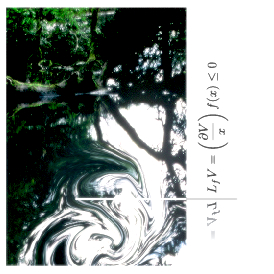Overview
Teaching
Research
The Human Shoulder Articulation
A neuromusculoskeletal model of the human shoulder is developed together with dedicated feedback strategies based on the types of muscle and neuromuscular model at hand. Motion planning is studied through null-space techniques on the tangent manifold. Advanced geometrical and topological tools are used to analyze the articulation as an over-actuated mechanical systems. The main challenge is dimensionality reduction of the underlying number of parameters while ensuring the possibility of finding feasible motions satisfying force and length constraints.
Jet Scheduling for Flat Systems
The goal is to Improve the robustness of flatness-based control with application to nonholonomic robots and crane control. The jet-scheduling methodology that separates the dynamics into two parts, one with small gains that allow gentle, yet swift, convergence to the equilibrium; another with large aggressive gains that help reject model mismatch such as dry friction appearing on the motor drives. Since it rests on differential flatness, it takes all nonlinear inertial forces into account to compensate for their negative effect on the convergence process. The name “Jet Scheduling” comes from the fact that it incorporates a dynamic exosystem that, instead of generating a full trajectory or path to track, it generates only higher order derivatives in the jet bundle of the flat output.
Differential Flatness Study for Constrained Systems
Differential flatness is a characterization of specific nonlinear systems that allow a linear description in a suitable equivalent space. The equivalence does not necessarily preserve the dimension of the underlying manifold that describes the nonlinear systems. Among complicated systems that present challenging control issues, one can mention cranes, unmanned aerial vehicles, kinematically constrained (nonholonomic) chained systems. These systems are, on the one hand, differentially flat, but they can also be considered as trivial systems in a larger space of coordinates that is quadratically constrained. This point of view leads to the study of trivial ambient spaces that, once restricted on a submanifold, generate complicated dynamics. We characterize mathematically the type of reduction that occurs in the context of differential flatness.
Quotient Methods
Feedback linearization is a technique that globally transforms a nonlinear system into a linear one. A feedback control law is then applied to the transformed system so as to achieve global asymptotical stable closed-loop dynamics. The construction of the required elements can be simplified if suitable equivalence classes of vectorfields and associated submanifolds are properly chosen. This leads to quotient vector bundles, and quotient submanifolds that foliates the original manifold into a nested sequence of foliations. The construction is performed both analytically and numerically. The interesting aspect of the construction is that it can be applied to systems that are not feedback linearizable. It also helps circumventing singularities in a variety of applications, especially in the case of the field controlled DC motor.
